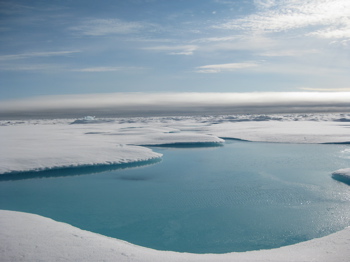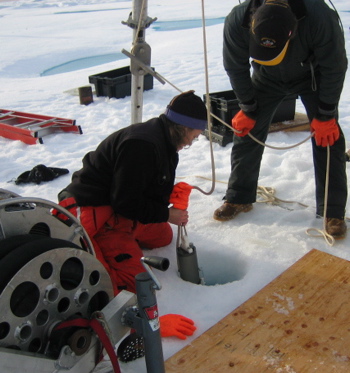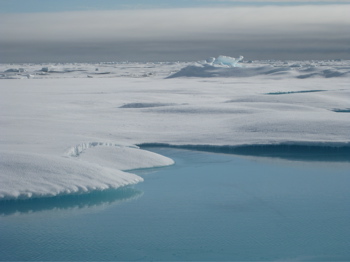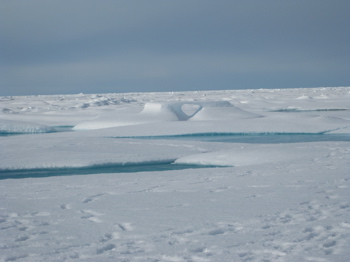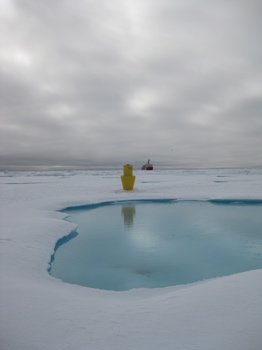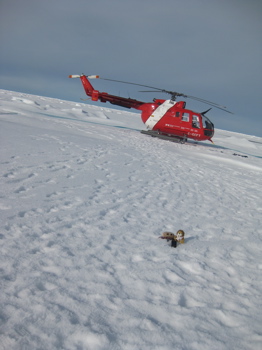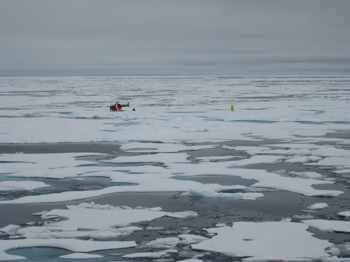Gerty WardAugust 12, 2008Today is our last trip out on to the ice. WHOI is deploying their last ITP, Dave Meldrum is putting in his third SAMS-IMBS and Alice & Kristina are directing an ice-sampling team. The day starts out "warm and sunny" (OK, the air temperature is 2°C. This is the Arctic after all). After the ITP hole is drilled, Sarah Zimmermann puts a CTD down the hole to profile the water under the ice. They are interested in the freshwater content of this water. To them, freshwater does not mean "drinking water" but instead water of lower salinity that comes from ice melting.
It is difficult to sample this surface layer from the ship because the ship is moving around and mixing this water up. One of the results to come out of the multi-year BGE project is that the freshwater layer is increasing in the Beaufort Sea. The cause of this increase is not well-understood. For more information on the BGE Project, please see the Beaufort Gyre Exploration Project background here. I have been on the LSSL for 3 weeks. The ship has been moving, breaking ice, rolling with waves and all the while the engines have been running. By stark contrast, the ice is quiet. We are moving -- this floe has drifted over 4 miles since yesterday afternoon -- but the motion is not perceptible. Ice feels firm underfoot, and today there is a crunch of ice and snow. We look ahead of where we walk: low spots, darker ice (where the dark water below is showing through) and melt pond edges are avoided. Attached is an ice safety guide that can give you an idea of how thick ice should be for various activities. As part of the deployment process, holes are drilled in the ice to be sure it is thick enough (see Dispatch #17 Deploying an ITP? and Dispatch #14 Ice Recon from Helo) for more information on these processes. The ice has small details in its landscape that are missed from the ship, as we steam by or are on station working.
The isolation is dramatic. When I look back at the ship, I think of astronauts looking back at Earth. Our helicopter is their LEM.
As our work ended, the clouds rolled in and the ice camp looked quite desolate from on board. The next time we will be off the ship is in Kugluktuk on 21 August. Last updated: October 7, 2019 | |||||||||||||||||||||||||||||||||
Copyright ©2007 Woods Hole Oceanographic Institution, All Rights Reserved, Privacy Policy. | |||||||||||||||||||||||||||||||||


